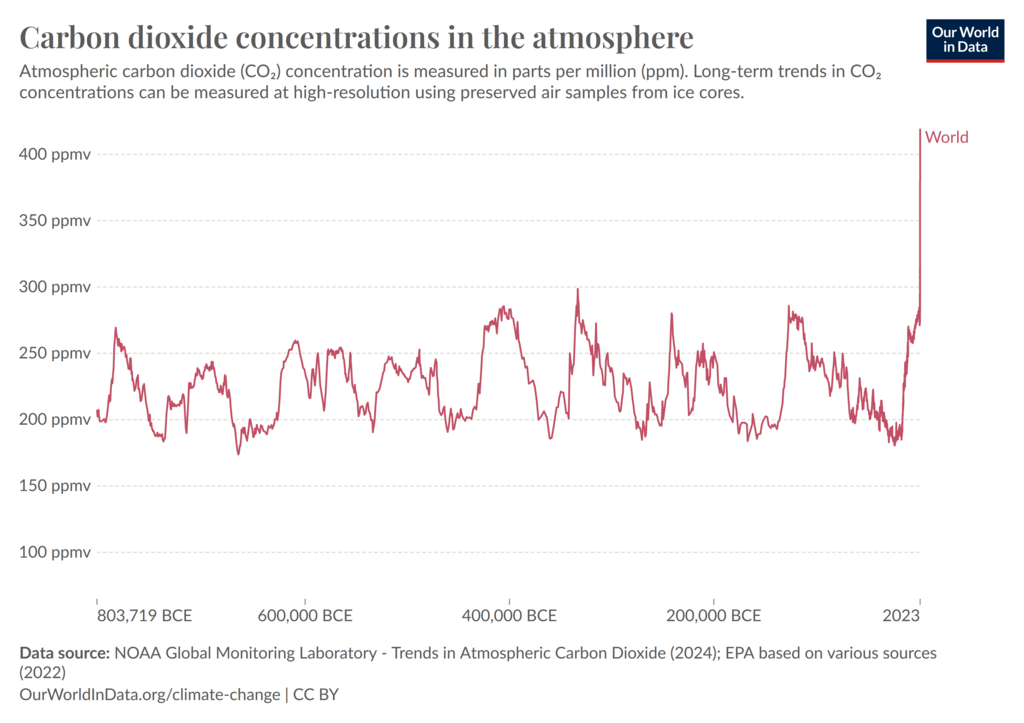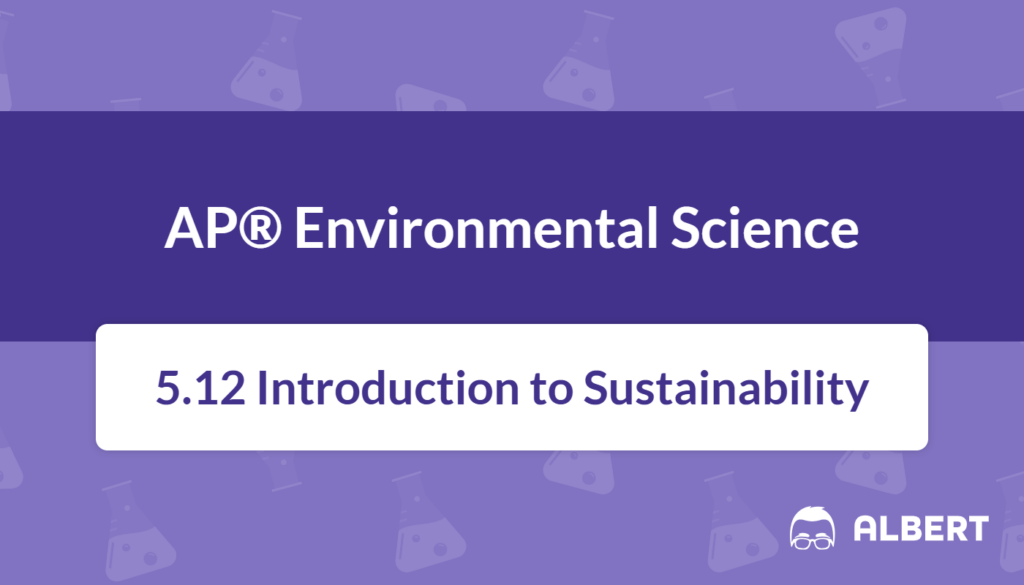What We Review
Introduction
In today’s world, sustainability stands at the forefront of environmental discussions. Understanding the sustainability definition is crucial for future generations because it shapes how people use resources and interact with Earth’s ecosystems. In AP® Environmental Science, sustainability highlights the careful balance between meeting human needs while preserving natural resources. Therefore, students can benefit by learning what sustainability entails, why it matters, and how to contribute positively.
What Is Sustainability?
Definition of Sustainability
Sustainability means using resources in a way that does not compromise their availability for future generations. In simple terms, it involves balancing the current consumption of natural materials with the need to keep these materials accessible for the long term. It is particularly relevant when discussing nonrenewable resources, such as coal and oil, as well as renewable ones, including timber and freshwater. Moreover, sustainable living recognizes that ecosystems are interconnected. Many organisms, including humans, rely on these resources for daily survival, so overuse can cause serious consequences.
Importance of Using Resources Wisely
In addition to protecting future supplies, living sustainably helps maintain healthy habitats for wildlife. This approach reduces negative impacts like pollution and habitat destruction. Furthermore, sustainability adds social and economic value because it often promotes efficient practices, such as limiting waste and reusing materials.
Key Concepts in Sustainability
Biological Diversity
Biological diversity, often called biodiversity, refers to the variety of different species and genetic variations in ecosystems. Healthy ecosystems depend on many types of plants, animals, and microorganisms to function properly. When a single species disappears or becomes overabundant, it disrupts vital processes like pollination or nutrient cycling. Therefore, maintaining biodiversity helps ensure resilient and productive ecosystems.
- Example: Suppose a coral reef contains many fish species. If a key fish species vanishes due to pollution or overfishing, algae might overgrow, harming coral and reducing the overall productivity of the reef.
Food Production
Food production is closely tied to sustainability because it involves the use of land, water, and energy. When agricultural practices are inefficient, resources are wasted, and ecological damage may result. In contrast, sustainable farming methods try to minimize inputs like water and chemical pesticides. These methods preserve soil quality, protect groundwater, and reduce harm to neighboring habitats.
- Example: A farm employs crop rotation, which means planting different crops in a field over multiple seasons to restore soil nutrients. This practice can reduce the need for chemical fertilizers and helps maintain healthy soil structure for the long term.
Average Global Surface Temperatures
Average global surface temperatures significantly affect ecosystems, agriculture, and weather patterns. Although Earth’s temperature varies over time, the current trend of warming is associated with increased greenhouse gas emissions. Warmer temperatures can disrupt species’ migration patterns and cause more extreme weather events, such as intense storms or droughts. Consequently, understanding how the planet is warming helps scientists predict future impacts on both natural ecosystems and human societies.
- Example: In a high-altitude forest, warmer temperatures may cause tree lines to shift upward, altering habitats for cold-adapted species that may have nowhere else to go.
CO2 Concentrations
Carbon dioxide (CO2) is a greenhouse gas crucial to climate regulation. Natural processes, such as photosynthesis, keep CO2 levels in balance by moving carbon through the carbon cycle. However, human activities, like burning fossil fuels and deforestation, release large amounts of CO2. This excess gas traps more heat in the atmosphere, amplifying global warming. Therefore, monitoring CO2 concentrations is vital for ensuring Earth’s climate remains stable enough to support diverse life forms.

- Example: Data show that atmospheric CO2 concentrations have risen from approximately 280 parts per million (ppm) before the Industrial Revolution to over 400 ppm in recent years. This increase correlates with higher average global surface temperatures.
Human Population and Resource Depletion
Human population size influences how quickly resources become depleted. A population growth model often reveals that more people typically need more food, water, energy, and space. Consequently, unchecked population growth can lead to overharvesting of fish, deforestation, and other environmental stresses. Reducing resource depletion involves finding ways to stabilize population growth rates, while also improving resource efficiency.
- Example: In a densely populated region, extensive land clearing for agriculture may take place to feed the growing population, resulting in deforestation and habitat loss that can destabilize local species.
Understanding Sustainable Yield
Definition of Sustainable Yield
Sustainable yield refers to the amount of a renewable resource that can be harvested without decreasing the future supply. For instance, a forest that regrows enough trees each year to replace those cut down demonstrates a sustainable yield in timber production. Knowing how to calculate a sustainable yield helps managers avoid overexploitation.
Step-by-Step Example: Sustainable Yield in Fishing
Consider a fish population in a coastal area:
- Suppose the starting population is P_0 fish.
- Each year, the population grows by a certain number, depending on reproduction rates and environmental factors.
- The allowable harvest, or catch, must remain below this growth amount to avoid reducing the population.
- Therefore, if the population grows by G fish each year, authorities should set a catch limit lower than G to maintain a stable population.
By following this guideline, fisheries ensure they do not remove more fish than can naturally replace themselves. As a result, the fish population remains robust enough to support both the ecosystem and the local fishing industry.
Environmental Indicators for Sustainability
Environmental indicators allow scientists and policymakers to measure and track progress toward sustainability. These measures provide early warnings of potential problems and signal areas where further attention is necessary.
Biological Diversity
As highlighted earlier, biological diversity remains central to ecosystem health. Tracking the number and variety of species in specific habitats offers insights into whether ecosystems are stable or in decline. Additionally, if certain species vanish rapidly, it could point to emerging issues like pollution or disease.
Food Production Levels
Monitoring food production levels helps identify whether agricultural methods are sustainable over the long term. Rising crop yields might indicate efficient practices or favorable climate conditions. In contrast, declining yields can result from soil nutrient depletion, water shortages, or ecosystem imbalance. Therefore, collecting consistent data on harvest amounts, fertilizer use, and irrigation patterns assists in identifying areas for improvement.
CO2 Levels and Their Monitoring
Accurate measurements of CO2 levels make it easier to forecast climate trends and assess the effectiveness of emission reduction strategies. Scientists can track changes in CO2 concentrations using remote sensing and direct sampling at key observation stations. Furthermore, these measurements help evaluate whether transitions to renewable energy are making a meaningful difference in reducing greenhouse gas emissions.
The Role of Individuals in Promoting Sustainability
Although governments and industries play vital roles in sustainability, individual actions also have a significant impact. Small, day-to-day decisions accumulate over time. Using energy-efficient appliances, recycling waste, and reducing water consumption are practical ways to make a difference. Moreover, consuming locally produced goods reduces carbon footprints from transportation.
Many students can also promote sustainability by educating others, participating in community projects, or encouraging policy changes in their schools. For example, installing renewable energy systems, like small-scale solar panels, can drastically cut a household’s reliance on fossil fuels. In addition, supporting local farms that use sustainable methods helps preserve biodiversity and stimulate regional economies.
Conclusion
Sustainability is a critical principle in AP® Environmental Science, reflecting the need to protect Earth’s resources for current and future inhabitants. People gain insight into how environmental changes can bolster or undermine ecosystems by studying biological diversity, food production, average global surface temperatures, and CO2 concentrations. Furthermore, understanding how human population growth connects to resource depletion reveals that mindful management is essential.
From sustainable yield calculations to environmental indicators, reliable data guide efforts to safeguard ecosystems. In addition, individuals can adopt responsible habits—like conserving energy and water—to promote sustainability in everyday life. By remaining informed and proactive, students can play an essential role in ensuring that future generations inherit a planet capable of sustaining life for centuries to come.
Key Vocabulary
- Sustainability: Living in a way that meets current needs without depleting resources for future generations.
- Biological Diversity: The variety of life in a particular ecosystem or on the planet.
- Sustainable Yield: The amount of a renewable resource that can be harvested without harming future availability.
- CO2 (Carbon Dioxide): A greenhouse gas that contributes to climate change when present in high concentrations.
- Resource Depletion: The consumption of a resource faster than it can be replenished.
Sharpen Your Skills for AP® Environmental Science
Are you preparing for the AP® Environmental Science test? We’ve got you covered! Try our review articles designed to help you confidently tackle real-world AP® Environmental Science problems. You’ll find everything you need to succeed, from quick tips to detailed strategies. Start exploring now!
- AP® Environmental Science: 5.9
- AP® Environmental Science: 5.10
- AP® Environmental Science: 5.11
Need help preparing for your AP® Environmental Science exam?
Albert has hundreds of AP® Environmental Science practice questions, free response, and full-length practice tests to try out.








